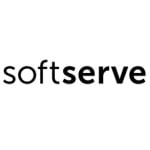In the forever-changing world of business and software development for businesses, effective analysis is key for making informed decisions, solving complex problems, and driving strategic initiatives. Business analysis frameworks and methodologies provide structured approaches to assessing, understanding, and improving various aspects of a business or project.
The goal of this article is to give you an overview of the key frameworks and methodologies that are essential to your work, no matter if you are a seasoned business analyst or someone who is just starting in this industry looking for a business analysis job.
WHAT IS A BUSINESS ANALYSIS FRAMEWORK?
A business analysis framework is a structured approach used to evaluate, comprehend, and improve different aspects of a business. It provides a systematic approach to identify, define, and address business issues and challenges. Frameworks provide guidance to organizations so they can define and achieve their vision and objectives. Typically, a framework includes the following steps:
- Identifying the Problem: Recognizing the business problem or opportunity that needs to be addressed.
- Defining the Scope: Setting the boundaries of the analysis, determining what is included and excluded.
- Gathering Information: Collecting relevant data and information.
- Analyzing the Information: Interpreting the data to gain insights.
- Developing Solutions: Proposing potential solutions to the identified problem or opportunity.
- Implementing Solutions: Executing the chosen solutions.
- Monitoring and Reviewing: Continuously assessing the effectiveness of the solutions and making the necessary adjustments.
What are some popular Business Analysis frameworks?
- The most popular one is probably SWOT Analysis. This framework helps you pinpoint the Strengths, Weaknesses, Opportunities, and Threats related to a business or project.
SWOT Analysis is primarily used for strategic planning and decision making. Although this is an efficient way to find out if your project has a competitive edge compared to others, you need to bear in mind that this type of framework can also be subjective, influenced by the biases of the participants.

- PESTLE Analysis. This framework analyzes the Political, Economic, Social, Technological, Legal, and Environmental elements that may influence a business. It helps in comprehending the macro-environmental factors impacting an organization.
Using a PESTLE Analysis can help you build effective risk management strategies, adapt to market dynamics, and make sure that your business or project remains compliant with legal and regulatory requirements.

- Business Model Canvas is another popular and widely used framework. This strategic management tool comes in handy when businesses develop new models or document existing ones. The canvas itself consists of nine building blocks that define various aspects of the business or project: Customer Segments, Value Proposition, Channels, Customer Relationships, Revenue Streams, Key Resources, Key Activities, Key Partnerships, and Cost Structure.
The Business Model Canvas helps teams clearly understand their products' business models, refine or develop business models, enhance communication between team members, and bring to attention any potential gaps or areas for improvement and innovation.

PROJECT MANAGEMENT METHODOLOGIES
A Project Management Methodology is a well-defined set of interrelated practices, methods, and processes that guide a project's planning, development, control, and delivery from start to finish. It represents a scientifically proven, systematic, and disciplined approach to project design, execution, and completion.
Business Analysts use a wide range of methodologies in their daily jobs. Here are some of the popular ones:

- Agile Methodology emphasizes flexibility, collaboration, and customer satisfaction within a project. A Business Analyst plays a crucial role in the Agile world. They will ensure that they understand business needs and the product/project vision, facilitate communication, prioritize requirements, support iterative development, and adapt to change while ensuring that the project maintains its value and relevance.
- Scrum is a subset of Agile used for managing complex projects, primarily in software development. Although a Business Analyst’s role is not formally defined within the Scrum methodology, their contribution is still significant. The BA will work closely with the Product Owner and stakeholders to gather and refine requirements, prioritize the backlog, be the communication pillar for the development team and stakeholders, advocate for continuous improvement, and ensure that feedback is incorporated into future workload.
- Lean Methodology is a systematic approach focused on minimizing waste and maximizing value in processes. Originating from manufacturing, it has been widely adopted across various industries, including software development and business analysis. Business Analysts apply Lean principles to enhance their analysis practices and ensure they deliver maximum value with minimal waste by eliminating non-value-adding activities in their processes, creating value stream maps to identify bottlenecks, collaborating with cross-functional teams towards common goals, regularly reviewing processes, and making incremental improvements.
- Six Sigma is a data-driven methodology that improves quality by identifying and removing the causes of defects and minimizing process variability. BAs leverage Six Sigma to enhance process efficiency and effectiveness by creating project charters and identifying key deliverables, measuring key metrics and gathering data about defects and process inefficiencies, and establishing controls to sustain improvements.
- Waterfall Methodology is a linear and sequential approach where each phase must be completed before the next begins. It’s best suited for projects with well-defined requirements and clear objectives. The Business Analyst plays a vital role throughout the project’s lifecycle. They will gather and document all business requirements, collaborate with system architects to make sure the design matches the requirements, assist the development team by clarifying requirements and ensuring all necessary scenarios are documented for testing, handling change requests, and ensuring alignment with business goals.


HOW DO YOU CHOOSE THE RIGHT FRAMEWORK OR METHODOLOGY?
Making the right choice for your project depends on multiple factors:
- Project Scope: The size and objectives of the project.
- Stakeholder Involvement: The level of engagement and input from stakeholders.
- Complexity: The intricacy of the project tasks and requirements.
- Time Constraints: The deadlines and timeframes for project completion.
- Resource Availability: The availability of necessary resources, including budget and personnel.
- Industry: The specific industry standards and practices.
- Organizational Culture: The values, norms, and practices within the organization.
MAKING THE RIGHT CHOICE FOR YOUR PROJECT DEPENDS ON MULTIPLE FACTORS. LET'S DISCUSS SOME OF THEM:
One of the most important things to have in mind is the project scope. If the project you are working on is for a small startup developing a new mobile app, Agile methodologies like Scrum could be the right way to go due to their flexibility and iterative approach. With Agile methodologies you can adapt to the stakeholder’s feedback and include it early on instead of waiting until the final delivery. On the other hand, if you are working for a large-scale enterprise resource planning (ERP) implementation at a multinational corporation, a comprehensive framework like PRINCE2 might be suitable due to its detailed planning and control stages.
If we consider stakeholder involvement and their level of engagement, the following scenarios are possible. In a government IT project where multiple departments and agencies need to provide input, using a Waterfall methodology can help ensure that all requirements are gathered and agreed upon upfront. On the other hand, in a software development project for a tech-savvy client who wants to be involved in every sprint, Agile methodologies like Kanban can facilitate continuous feedback and adjustments.
Another aspect to have in mind when choosing the right framework or methodology for your project is complexity, the intricacy of the project tasks and requirements. For a project involving the integration of multiple legacy systems with new cloud-based solutions, a hybrid approach like Agile-Waterfall (Agifall) might be necessary to handle the complex dependencies and ensure thorough testing. In contrast, a straightforward website redesign project might benefit from a Lean methodology to streamline processes and eliminate waste.
When it comes to time constraints, the deadlines and timeframes for project completion cannot be forgotten. If a project has a tight deadline, such as developing a new feature for a mobile app to be launched in time for a major industry event, using Scrum can be highly effective. Scrum's iterative sprints allow the team to focus on delivering incremental improvements and quickly adapt to any changes or feedback. This approach ensures that the most critical features are developed and tested within a limited timeframe, while maintaining high quality and flexibility to adjust priorities as needed.
The availability of necessary resources, including budget and personnel, can have a great impact on how you choose to work on the project. A project with a limited budget and personnel, such as a small business upgrading its IT infrastructure, might benefit from using a Lean methodology to maximize efficiency. Conversely, a well-funded project with a large team, like developing a new operating system, might use the Scaled Agile Framework (SAFe) to manage the extensive resources and coordination required.
Industry, the specific industry standards and practices, also need to be considered. In the healthcare industry, where compliance and regulatory standards are critical, using a methodology like Lean Six Sigma can help ensure that processes meet stringent quality requirements. In the fast-paced tech industry, Agile methodologies - Scrum, Kanban, or a mix of both - are often preferred to quickly adapt to changing market demands and technological advancements.
Organizational culture - the values, norms, and practices within the organization will also have an impact on the chosen methodology. In a traditional organization with a hierarchical structure, a Waterfall methodology might align better with the existing processes and decision-making practices. In contrast, a startup with a flat organizational structure and a culture of innovation might thrive using Agile methodologies that promote collaboration and flexibility.
Finally, the team and project maturity. For a software development project aimed at creating a new customer relationship management (CRM) system, the choice of methodology can significantly impact the project's success.
Seasoned Team with Agile Experience: A team with extensive experience in Agile practices might excel using Scrum. For instance, if the team has previously worked on developing complex e-commerce platforms using Agile, they can leverage their expertise to manage the CRM project. They can use the Business Model Canvas to outline key aspects such as customer segments, value propositions, and revenue streams, ensuring that each sprint delivers incremental value aligned with the business goals.
New Team to Project Management: Conversely, a team new to project management might benefit from the structured guidance provided by the Waterfall methodology. For example, if the team is tasked with developing a new internal tool for data analysis, following Waterfall can help them adhere to a clear, step-by-step process. This approach ensures that each phase, from requirements gathering to design, implementation, and testing, is thoroughly documented and reviewed. Using the Business Model Canvas, they can map out the project's key activities, resources, and partnerships, providing a comprehensive view that supports meticulous planning and execution.
CONCLUSION
Choosing the right framework or methodology for your project is crucial for its success. By understanding the project scope, stakeholder involvement, complexity, time constraints, resource availability, industry standards, organizational culture, and team maturity, you can make informed decisions that align with your project's unique needs.
For instance, Agile methodologies like Scrum are ideal for projects requiring flexibility and iterative development, while the Waterfall methodology is suited for projects with well-defined requirements and sequential phases. Tools like the Business Model Canvas can further aid in visualizing and aligning project goals with business objectives.
Ultimately, the right framework or methodology choice will enhance efficiency, ensure stakeholder satisfaction, and drive successful project outcomes.






































